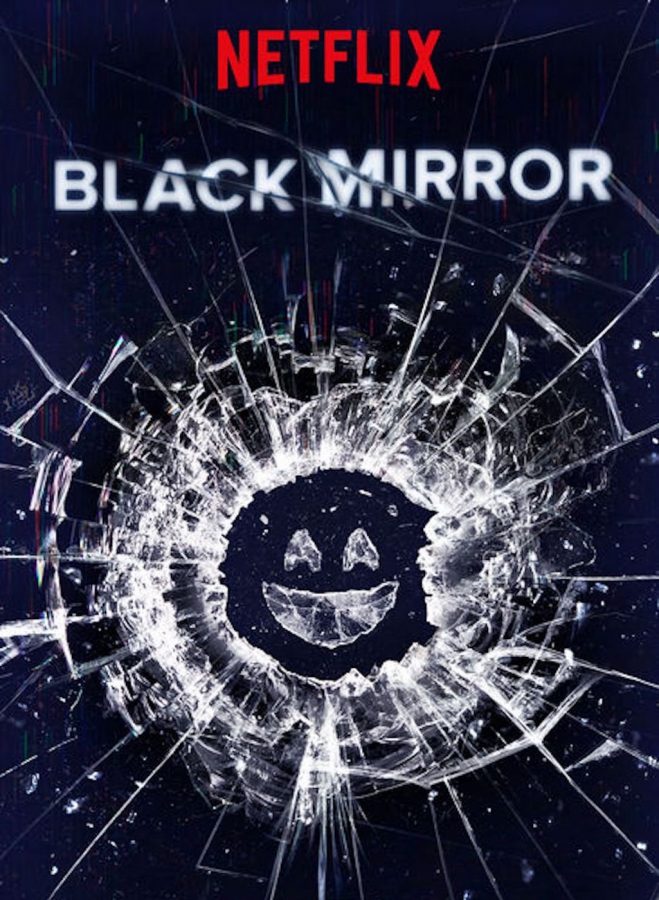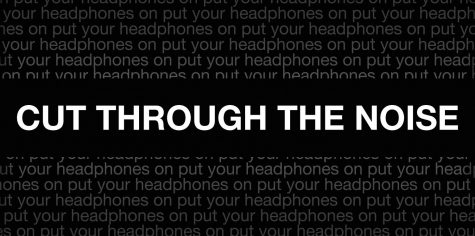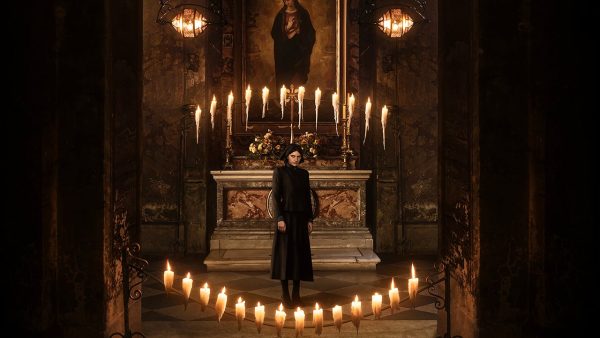‘Black Mirror’ explores human behavior in riveting fourth season
Netflix original comments on contemporary society
January 11, 2018
“Black Mirror” is a British science-fiction episodic-anthology produced by and exclusively offered on Netflix. The show always takes place in some distant future that in general highlights the potential dark sides of technological advancement. Each season of “Black Mirror” has three to six episodes that are released all together and are not related to each other. In a sense, each acts like its own short film.
Compared to its prior seasons, “Black Mirror’s” newly released fourth season generally focuses more on human behavior and cognition compared to the other technology-focused seasons. Although some episodes are better than others, “Black Mirror” has come back as strong as ever and has once again projected a frightening, yet riveting perspective on society today.
Episode 1: USS Callister
Rating: 5/5 stars
“USS Callister” follows Robert Daly (Jesse Plemons), the chief technology officer at a large video game company that created a popular fantasy game, “Infinity.” Daly is not respected or appreciated in his workplace, but strictly commands and controls his coworkers as a space captain in a modified version of the game at home. All goes relatively smoothly in Daly’s modified game until a new coworker/crew member is added and discovers a much darker side to the game. The cast carries out the story very well and successfully crafts a creepy, unshakable tension that stays with the viewer. However, the subtly ironic ending feels a bit rushed and somewhat incomplete, but this is only a small problem compared to the episode as a whole. “USS Callister” is one of the better episodes of this season and is intensely thrilling to watch as it spirals further into darkness with every passing minute.
Episode 2: Arkangel
Rating: 4.5/5 stars
“Arkangel” follows Marie (Rosemarie DeWitt), a mother who signs her daughter Sarah (Brenna Harding) up for a new experimental program that allows parents to monitor where their children are, what they see, hear and much more. The program works wonderfully at first. It keeps Sarah safe and happy anywhere she may be, but starts to get in the way of Sarah’s social life as she gets older. “Arkangel” provides for an increasingly tense tale of dishonesty between a mother and daughter and gives very strong, but obvious commentary on helicopter parenting and how it affects children. This episode is refreshingly complex for “Black Mirror,” but the effect of parental censorship could have been shown in a deeper way, seeing as it is one of the main themes of the episode. The gruesome ending leaves viewers with a shocking, sad feeling, but also a sense of closure that really finishes off the story nicely.
Episode 3: Crocodile
Rating: 4/5 stars
“Crocodile” is about an architect named Mia (Andrea Riseborough) who is struggling to hide a dark secret about a terrible mistake she made years ago. This task becomes harder and harder throughout the episode as Mia’s attempts to cover her tracks become progressively entangled and dangerous. Mia took very frightening measures to keep herself safe, which added to the increasingly dark theme of the episode. A minor issue I found was that as the episode built up and Mia’s actions became more complex, I was expecting a crazy ending. While certainly unexpected, the climax was not as “mind-blowing” and intense as I had hoped it to be. All in all, “Crocodile” is a dark and shocking hour.
Episode 4: Hang the DJ
Rating: 4/5 stars
“Hang the DJ” takes place in a universe where every dating couple is set up by a computerized system that puts a different expiration time on each relationship. It only pairs the same couple once, creating several relationships until a person is set up with their final, “perfect” companion. After somehow being paired twice, Frank (Joe Cole) and Amy (Georgina Campbell) have doubts about the system and its logic. The couple soon considers breaking “the rules” of their relationship, despite the consequences. “Hang the DJ” provides a heartwarming contrast to the often negative themes of “Black Mirror.” At times, however, due to the sci-fi elements that were strongly mixed in, it felt like the episode was trying a bit too hard to have a positive theme. I found it difficult to absorb this positive feeling because the episode itself was a bit far-fetched. If the viewer is able to ignore its absurdity, the episode is entertaining and quite pleasing. “Hang the DJ” is almost a great futuristic love story.
Episode 5: Metalhead
Rating: 3/5
“Metalhead” follows a group of scavengers as they search for supplies in an abandoned warehouse in a post-apocalyptic world. Once these scavengers find exactly what they’re looking for, it seems they are home free. However, they soon encounter a merciless guard dog and must run for their lives, escaping seems impossible. “Metalhead” has a cool concept: a human escaping a non-human enemy, but the story lacks lasting excitement and is essentially a 40 minute game of cat and mouse. The acting is great, especially because there is almost no dialogue. The episode would be great as a part of a longer movie, but is just a little bland on its own. As I was watching, I was constantly waiting for something substantial to happen, but the cycle of being caught and escaping just repeated over and over. I recommend watching this episode just because, but don’t panic if you accidentally skip ahead.
Episode 6: Black Museum
Rating: 4.5/5
In “Black Museum,” a highway traveler (Letitia Wright) visits an odd museum that contains rare criminal items with wild stories attached to them. The museum owner (Douglas Hodge) boasts odd technologies gone wrong, and behind a curtain hides the museum’s unsettling main piece. This episode features a few short tales in the form of backstories on museum artifacts that are all loosely related and come together at the climax of the episode. The whole concept of “Black Museum” is intriguing, as new secrets are revealed each moment. It was gripping to watch while slowly discovering the protagonist is related to the museum and its features more than ever previously realized. The only aspect I didn’t particularly enjoy was the fact that the backstories about each piece in the museum felt a little too long, as if they all could have had their own episodes. This is only a small issue, however. “Black Museum” should absolutely be watched.














